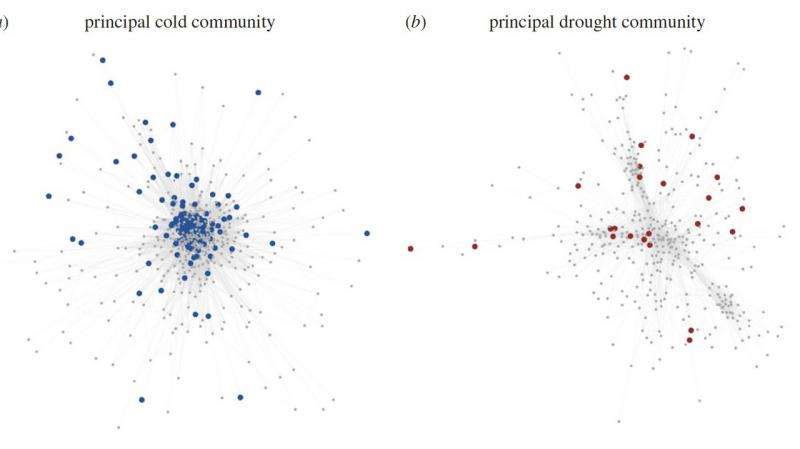New study explores plant adaptations to drought and cold stress

Recent advances in technology have allowed scientists to probe the molecular nature of life, analyzing thousands of genes at a time and recognizing patterns of gene interaction. In a recent paper published in Proceedings of the Royal Society B, complexity scientist Samuel Scarpino and co-authors explore gene co-expression networks that have evolved to help plants withstand drought and cold.
While researchers have been uncovering one distinctive gene co-expression network after another in recent years, "Most people have stopped there and thrown their hands up," says Scarpino, a former Santa Fe Institute Omidyar Fellow and current professor at the University of Vermont.
Understanding interactions between different gene networks, which are evolved to respond to different stressors, and understanding natural variation in these responses could have important agricultural applications in challenging environments.
This study focused on the small, flowering plant, Arabidopsis thaliana, which is part of the Brassicaceae ⁄ Cruciferae family along with cabbage and broccoli. The authors identified two unique gene expression networks—one adapted to cold and one to drought.
These two responses differ strategically and in evolutionary age. During drought, the differentiated tissues of roots, stems, and leaves each performs distinctive operations. But when the environment cools, the cells in every tissue cope similarly, and by means that might as well have been applied, in prototype, by single-celled ancestors eons ago.
Scarpino and co-authors David Des Marais (Harvard University), Rafael Guerrero (Indiana University), and Jesse Lasky (Pennsylvania State University) found that the genes that specifically cooperated during cold mapped to central, broadly networked positions within the roughly 10,000-gene network. By contrast, genes that cooperated specifically in drought mapped to peripheral clusters within the overall network.
In other words, the architectures of the two gene networks appear to echo how plants themselves behave under the two stresses. Their distinct organizations also might explain why there is more natural genetic variation in drought hardiness than against cold across Arabidopsis thaliana.
More information: David L. Des Marais et al. Topological features of a gene co-expression network predict patterns of natural diversity in environmental response, Proceedings of the Royal Society B: Biological Sciences (2017). DOI: 10.1098/rspb.2017.0914
Journal information: Proceedings of the Royal Society B
Provided by Santa Fe Institute




















